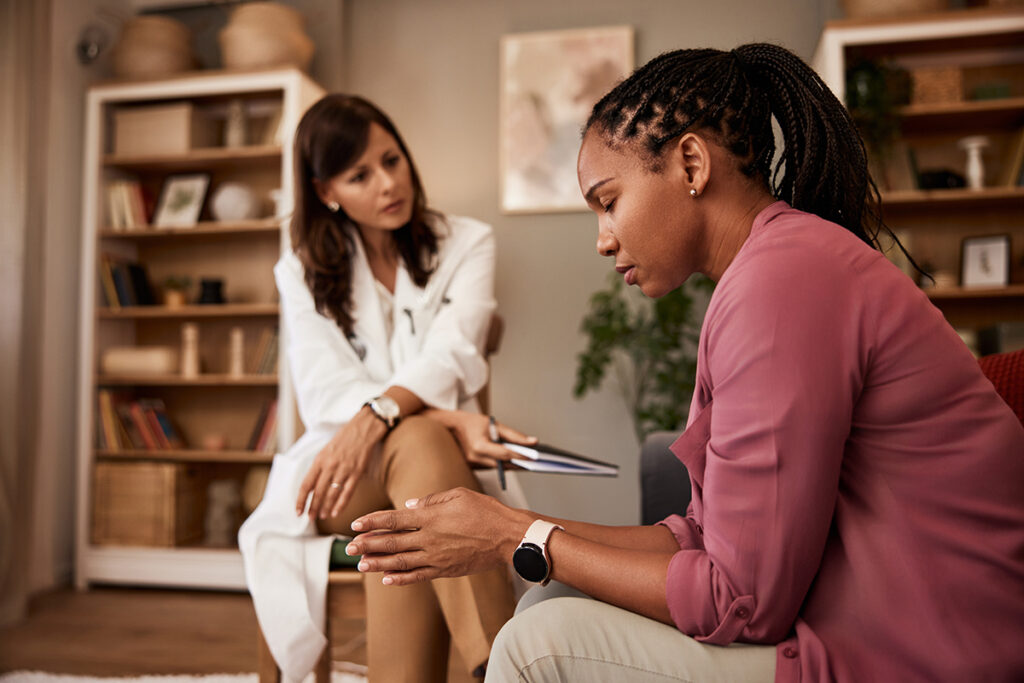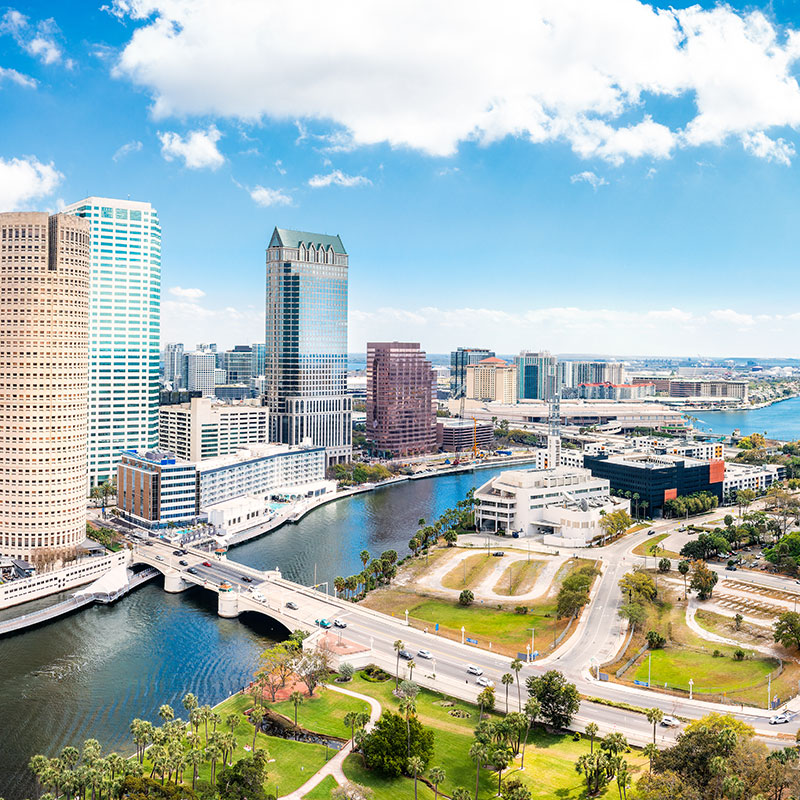Finishing addiction rehab is a huge accomplishment, but what comes after can feel unexpectedly difficult. For many people with trauma, leaving the safety of a structured treatment setting means facing the world with fewer buffers. Sounds, situations, or even emotions can suddenly feel overwhelming. These are PTSD triggers—real, powerful reactions rooted in past experiences that still affect your nervous system today.
If you’ve found yourself feeling anxious, emotionally numb, reactive, or shut down in your day-to-day life after rehab, you’re not failing. You’re navigating one of the hardest parts of healing. The good news? With the right tools and support, you can learn how to manage PTSD triggers and stay strong in your recovery.
How PTSD and addiction often interact
PTSD and substance misuse often go hand-in-hand. Studies show that up to nearly half of people with PTSD also develop a substance use disorder. For many, substances become a way to dull intense emotions, flashbacks, or anxiety—providing temporary relief at a long-term cost. Without treatment, this cycle of trauma and substance use can become deeply entrenched.
Healing from both conditions requires an integrated approach that treats the mind and body together. It’s not enough to focus solely on addiction or only on trauma—you need care that sees the full picture.
Types of PTSD triggers
PTSD triggers can be external or internal—and they’re often not obvious until they hit you. Understanding the different types can help you prepare for and respond to them more effectively.
External triggers include:
- People, places, or objects tied to past trauma
- Loud noises, fireworks, or sirens
- Arguments or confrontations
- Anniversaries or specific calendar dates
Internal triggers may involve:
- Strong emotions like anger, sadness, or shame
- Physical sensations (e.g., increased heart rate or pain)
- Thoughts or memories that suddenly resurface
- Dreams or nightmares
Sometimes, you won’t even know what triggered you. That’s okay. Part of healing is learning to respond with compassion, not judgment.
What PTSD triggers can look like in everyday life
A trigger is anything that reminds your body or brain of past trauma. These reminders can feel overwhelming, even if you know logically that you’re safe.
Common examples include:
- Loud noises, sirens, or sudden movements
- Smells, songs, or locations tied to past trauma
- Emotional experiences like conflict, loss, or rejection
- Anniversaries, holidays, or seasons that carry memories
- Internal states like anxiety, a racing heart, or fatigue
When triggered, you might feel panicked, shut down, disoriented, or emotionally flooded. It can feel like your nervous system takes over—and in a way, it does. But these moments are manageable once you learn to recognize them.
Understanding your triggers is just the beginning. Once you recognize them, the next step is learning how to respond with intention and compassion. That’s where coping skills come in.
In treatment, you may have already practiced tools for managing distress. But post-rehab life brings new situations and challenges, so continuing to build that toolbox is key. Supportive environments—like sober living homes—can make all the difference as you apply what you’ve learned in a more independent setting.
Just as you learn to cope with triggers, you’ll also begin to rebuild the parts of life that addiction and trauma may have impacted. Let’s look at how that healing unfolds.
How to calm down from being triggered
When a trigger hits, your first instinct might be to escape or shut down. But over time, you can train your body and mind to respond differently. Here are a few grounding techniques that can help in the moment:
- Deep breathing: Slow, intentional breaths calm your nervous system. Try a 4-4-4-4 box breath (inhale 4, hold 4, exhale 4, hold 4).
- 5-4-3-2-1 grounding: Name five things you see, four things you hear, three things you feel, two things you smell, and one thing you taste.
- Cold water or movement: A splash of cold water or a brisk walk can shift your physiology quickly.
- Reach out: Talk to someone you trust. Saying “I’m feeling triggered” can be enough to start getting support.
These strategies help anchor you back in the present. Over time, you’ll learn which ones work best for you and how to use them before a trigger escalates.
Coping skills to add to your toolbox
Coping skills are your buffer against the emotional weight of PTSD. The more consistently you practice them, the more resilient you become. Here are a few categories of tools that many people find helpful:
- Mind-body skills: Yoga, tai chi, breathwork, and somatic movement.
- Creative expression: Journaling, music, art, or storytelling.
- Social support: Attending group therapy, peer support meetings, or connecting with sober friends.
- Structure and routine: Setting a daily schedule, maintaining sleep hygiene, and keeping commitments.
- Self-care: Prioritizing rest, nutrition, hydration, and gentle exercise.
You don’t need to use all of these; just find what resonates with you. Building a routine around your top two or three tools can make a big impact.
Managing PTSD triggers in sober living or post-rehab settings
Post-rehab environments vary, but many people transition into sober living homes or outpatient care. These settings can be a powerful bridge between intensive treatment and full independence.
In sober living, you’ll likely have:
- A structured daily schedule
- House meetings and chores
- Group therapy and recovery meetings
- Curfews and accountability systems
These elements offer safety and support while giving you space to navigate real-world challenges like triggers. You’ll also be surrounded by others in recovery, many of whom understand PTSD firsthand. Having someone nearby who “gets it” can make a hard day much more manageable.
Evidence-based therapies that help
If you’re struggling with frequent or intense triggers, trauma therapy can help. Evidence-based treatments for PTSD include:
- Cognitive-behavioral therapy (CBT): Teaches you to reframe distressing thoughts and develop healthy coping strategies.
- Eye movement desensitization and reprocessing (EMDR): Helps the brain reprocess traumatic memories using bilateral stimulation.
- Prolonged exposure therapy: Gradually exposes you to trauma-related stimuli in a safe, controlled setting.
- Somatic therapy: Focuses on how trauma is held in the body and uses movement, breath, or touch to release tension.
These therapies can be truly life-changing, offering significant benefits when integrated with substance use treatment to support long-term recovery and overall well-being.
Why choose Sophros Recovery for PTSD and addiction recovery
At Sophros Recovery, we recognize that trauma doesn’t go away just because you’ve stopped using substances. That’s why our care model is built around integrated, trauma-informed healing.
When you choose Sophros, you can expect:
- A treatment plan that addresses both PTSD and addiction together
- Licensed therapists who specialize in trauma recovery
- Group therapy, mindfulness, and holistic modalities
- Ongoing aftercare and relapse prevention support
We believe that recovery isn’t just about abstaining—it’s about rebuilding your life with safety, clarity, and purpose. It’s about creating a future you can truly look forward to, one where you feel empowered, supported, and in control. And we’re here to help you every step of the way to make that vision a reality.
Rebuilding life after rehab: More than sobriety
Recovery isn’t just about staying sober. It’s about creating a life that feels safe, meaningful, and fulfilling. After you’ve left a treatment program, you’ll begin to rebuild your daily routines, your relationships, and your sense of self.
This might include:
- Setting structured goals for school, work, or personal development
- Exploring creative outlets like music, art, or journaling to process emotions
- Reconnecting with family or building new relationships rooted in trust
- Developing a self-care routine that helps you stay grounded and centered
It’s okay if this process feels overwhelming at first. Many people in early recovery experience waves of self-doubt or grief for the time they lost. That’s why it’s important to celebrate small wins. Even making your bed each morning or showing up to a group meeting is a step forward.
What matters most is not perfection—but progress. Over time, with practice and support, life after rehab starts to feel less like a tightrope and more like solid ground.
Frequently asked questions: Understanding PTSD triggers
Can PTSD triggers lead to relapse?
Yes — especially if you’re caught off guard. Triggers can overwhelm your coping system and make you crave the relief you used to find in substances. That’s why relapse prevention plans are so important.
How can I tell if something is a PTSD trigger?
A trigger is anything that suddenly shifts your mental, emotional, or physical state. If you notice a change—like your heart racing, emotions flooding, or sudden dissociation—it could be a trigger.
Is it possible to heal PTSD and addiction together?
Absolutely. In fact, treating both at the same time (also called integrated or dual diagnosis treatment) often leads to the best outcomes.
Can sober living help manage PTSD triggers?
Yes. Structured environments provide routine, accountability, and peer support—all of which help reduce the frequency and impact of triggers.
What should I do if a trigger feels overwhelming?
Start by grounding yourself with deep breaths and physical awareness (e.g., plant your feet on the floor). Reach out to a therapist, sponsor, or trusted person. You don’t have to go through it alone.
How long does it take to feel better?
Everyone’s healing timeline is different. Some people feel better within weeks; others take months or years. What matters is that you’re moving forward—even if it’s slowly.
Will I always have triggers?
You may always have moments that remind you of past trauma, but with the right tools, those moments lose their power. Over time, they become easier to manage—and they stop defining your life.
Take the first brave step toward healing today
If you’re feeling overwhelmed by PTSD triggers after rehab, you don’t have to navigate it alone. Sophros Recovery Tampa offers compassionate, trauma-informed support to help you manage PTSD, maintain sobriety, and move forward with confidence. Reach out today at 813.686.6306 or online to talk to a member of our team and take the first step toward healing. Your recovery continues here, and we’re ready to walk with you.




